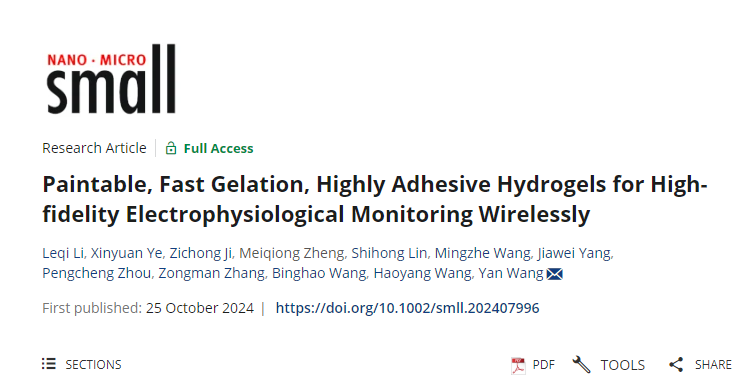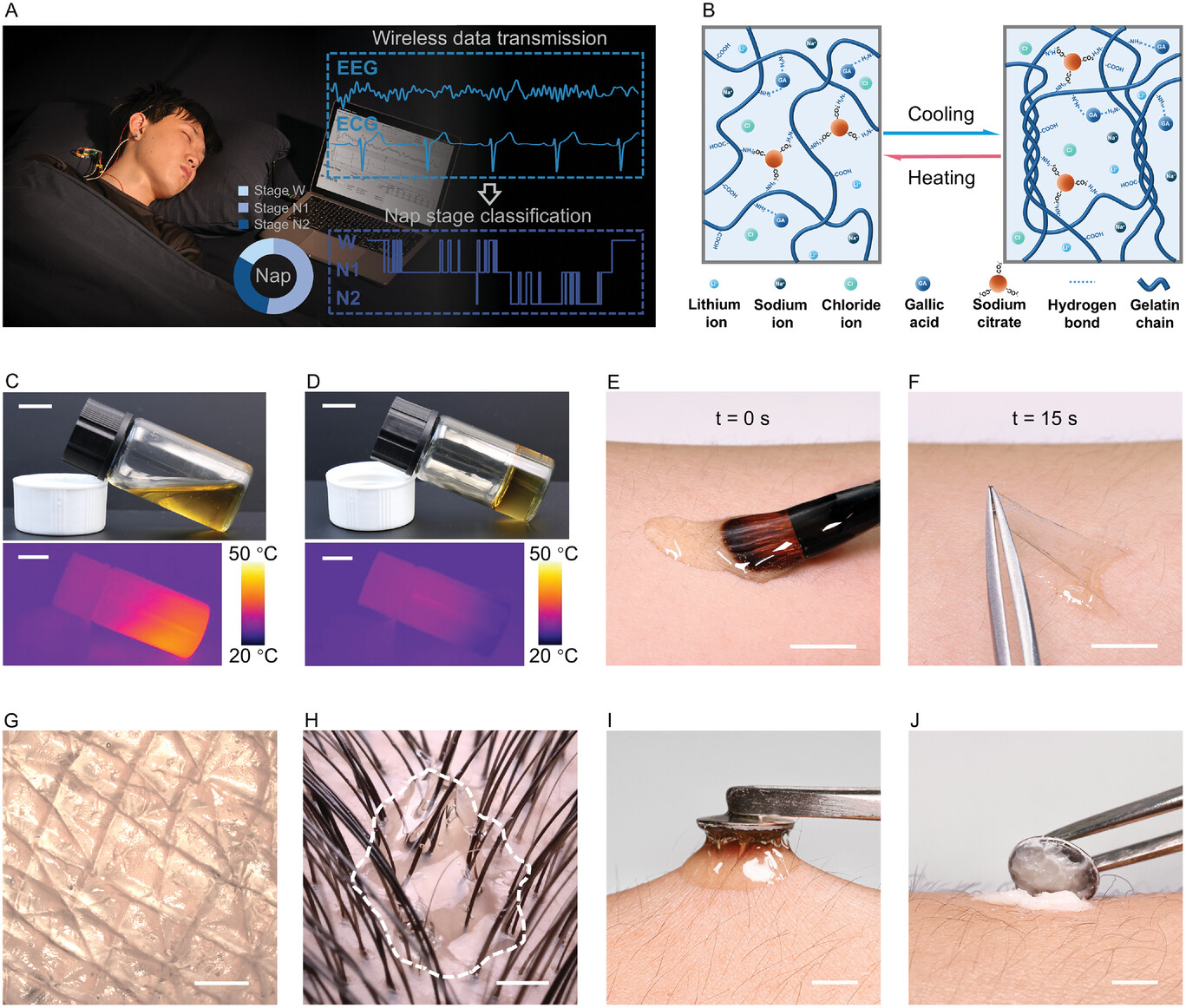PostTime:1/20/2025
Recently, Li Leqi and Ye Xinyuan, two undergraduate students from Cohort 2022 of Chemical Engineering Program at Guangdong Technion - Israel Institute of Technology (GTIIT), published an academic article titled "Paintable, Fast Gelation, Highly Adhesive Hydrogels for High-fidelity Electrophysiological Monitoring Wirelessly" in the TOP journal Small as the first authors. Assoc. Prof. Wang Yan from GTIIT Chemical Engineering Program is the corresponding author of the article.

High-fidelity electrophysiological signal monitoring is paramount in medical and neurological research, and the development of adaptable and conformable electrode interfaces is essential for achieving stable electrophysiological recordings. Hydrogels are optimal bioelectronic materials due to their comparable mechanical properties to skin tissue and high biocompatibility. However, contact with hairy skin presents significant challenges, as dense hair can obstruct electrode attachment, thereby affecting the stability of electrical signal acquisition.
To address this issue, an in-situ gelling strategy for smearable hydrogels has emerged. However, problems such as prolonged gelling time and the need for additional equipment still exist. Inspired by the temperature phase transition properties of gelatin, the team developed a spreadable, fast-gelling, and highly adhesive conductive hydrogel specifically designed for high-fidelity wireless physiological monitoring. This hydrogel can rapidly gel within 15 seconds upon contact with the skin, thus overcoming the difficulties traditional hydrogels face in adhering to hair-covered areas and alleviating discomfort associated with prolonged gelling times.

This innovative design not only enhances the adhesion of the hydrogel but also provides excellent conductivity and mechanical strength. It can be securely affixed to the skin or scalp without the need for additional fixation, enabling long-term electrophysiological signal acquisition. The hydrogel electrode material can penetrate scalp hair and form a conformal interface with the skin through its unique fluid-gel phase transition properties, ensuring continuous, interference-free electrocardiogram and high-resolution sleep electroencephalogram signal monitoring during daily activities. This design significantly improves the signal quality of monitoring, presenting promising applications in convenient home health monitoring.
Leqi joined the research group in her second semester of freshman year. Drawing on the theory of protein isoelectric points (pI) learned in the Introduction to Biochemical Enzymes course, she adjusted the pH of the hydrogel system to approach the pI of gelatin, optimizing the gelation conditions for in-situ paintable hydrogel applications. "In the Partial Differential Equations course, we learned about Fourier Transforms and Short-time Fourier Transforms, which helped us analyze frequency information in EEG signals and track dynamic features. We also introduced multi-taper spectral analysis to deeply examine frequency dynamics during sleep, enabling precise sleep stage classification," explained Xinyuan, who joined the group in his sophomore year. He believes that the professional knowledge gained in the courses played an indispensable role in this project.

In the research process, Leqi and Xinyuan not only sought guidance from their mentors, but also demonstrated their self-learning abilities. Leqi reflected that this research experience deepened her understanding of critical thinking. "Only by learning to analyze and evaluate the reliability of information can we make better judgments and decisions when facing complex research challenges." Xinyuan emphasized that research requires patience and perseverance, with every failure serving as a valuable learning opportunity. He also highlighted the importance of accurately describing experiments and results in scientific research.

"Publishing a high-impact paper as lead authors in their third year is a clear reflection of their potential in research." Dr. Wang Yan spoke highly of the students' research performance. "They have displayed strong academic abilities, curiosity and self-motivation. This commitment and passion for scientific exploration are exactly the traits that form a solid foundation for a successful future in research."

Small (JCR Q1, Top journal in the Chinese Academy of Sciences classification, IF=13) is a nanoscience & nanotechnology journal providing a forum for fundamental and interdisciplinary applied research at the Nano and microscale, covering chemistry, energy, physical & materials science, engineering, and biomedical and life sciences.
Text/Photos: Dr. Wang Yan's Team, GTIIT News & Public Affairs
© GUANGDONG TECHNION-ISRAEL INSTITUTE OF TECHNOLOGY | 粤ICP备17036470号
